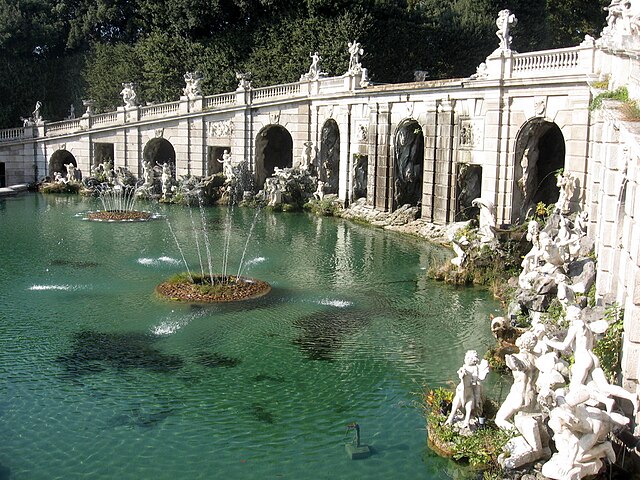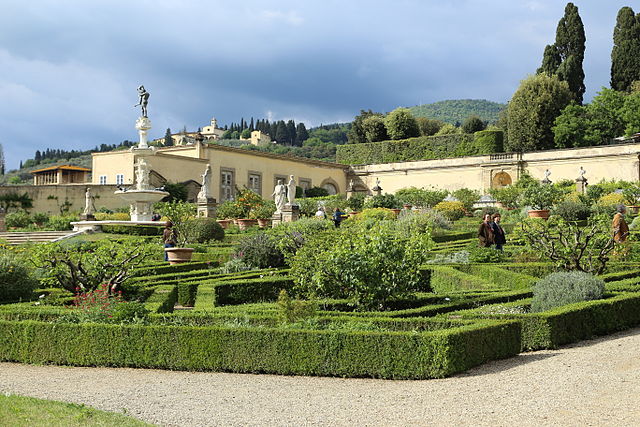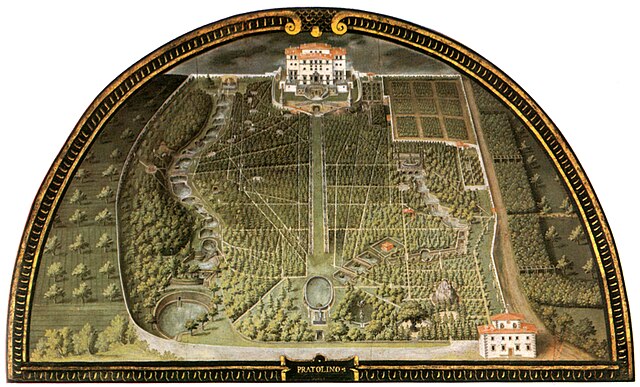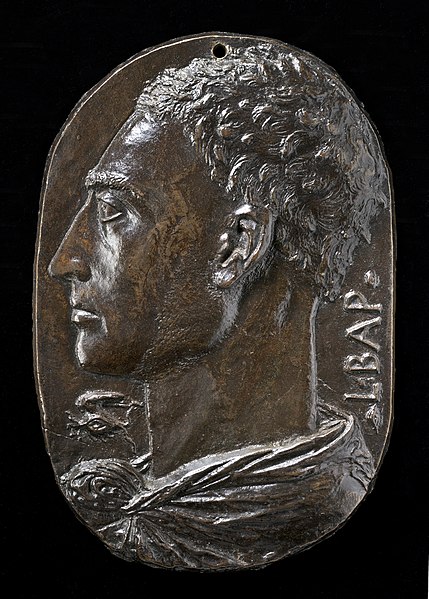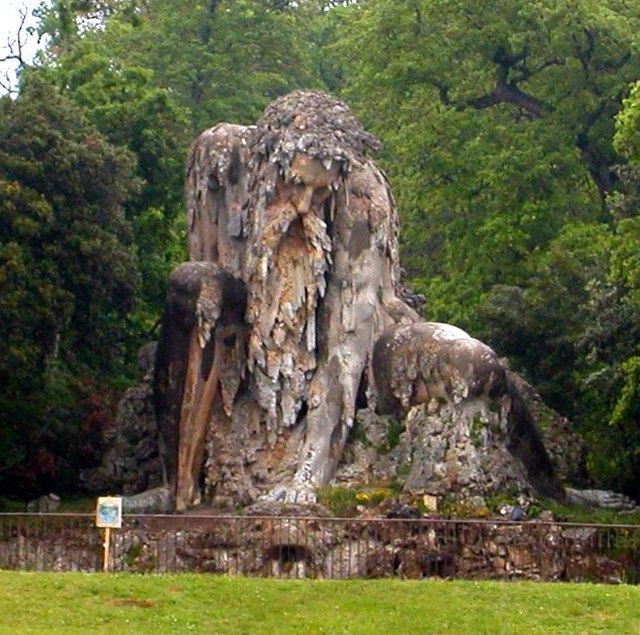Italian garden typically refers to a style of gardens, wherever located, reflecting a number of large Italian Renaissance gardens which have survived in something like their original form. In the history of gardening, during the Renaissance, Italy had the most advanced and admired gardens in Europe, which greatly influenced other countries, especially the French formal garden and Dutch gardens and, mostly through these, gardens in Britain.
Garden of Villa d'Este
Statues in the gardens of the Palace of Caserta
Reconstruction of the garden of the House of the Vettii in Pompeii
Fountain of Heracles and Antaeus in the gardens of the Villa di Castello, Florence
Italian Renaissance garden
The Italian Renaissance garden was a new style of garden which emerged in the late 15th century at villas in Rome and Florence, inspired by classical ideals of order and beauty, and intended for the pleasure of the view of the garden and the landscape beyond, for contemplation, and for the enjoyment of the sights, sounds and smells of the garden itself.
Gardens of the Villa Aldobrandini (1598)
Lunette painted by Giusto Utens (1598) of the Medici garden at Villa Pratolino
Leon Battista Alberti, self-portrait medal, c. 1435
The Apennine Colossus by Giambologna in the gardens of Villa di Pratolino, about 1580


